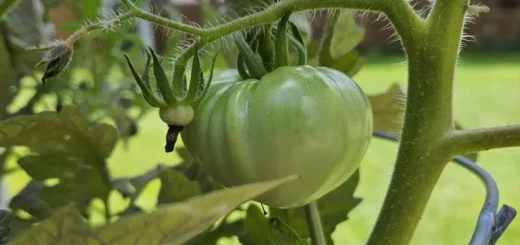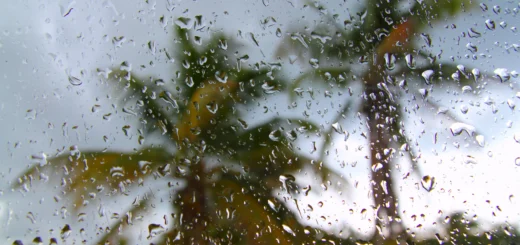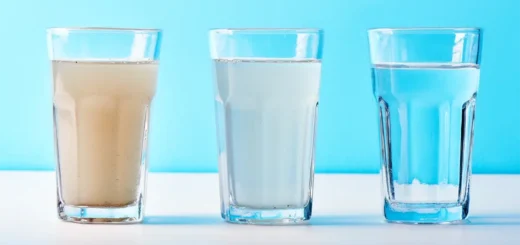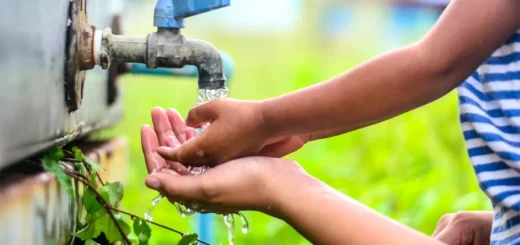Water Storage for Disasters and Emergencies: A Complete Guide
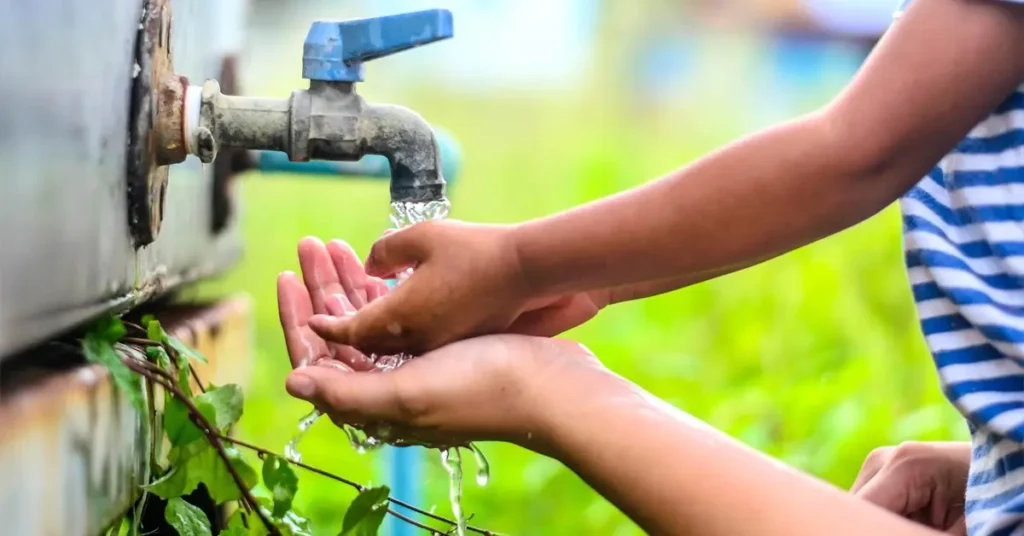
Hey there, fellow preppers! When facing challenges like hurricanes, floods, power outages, or even pandemics, being ready is key. It’s all about having the upper hand in tough times. That’s why we’re here to talk about a vital part of emergency preparedness: keeping a good stash of water. In this Southern Prepper Magazine post, we’re going to dive into why water storage matters during emergencies and dish out some top-notch advice on making sure you’ve got enough water to ride out any storm that comes your way.
You know, when the going gets tough, a well-thought-out plan can be your saving grace. And water? It’s at the heart of that plan. So, buckle up as we explore the ins and outs of water storage for emergencies.
Table of Contents
Understanding Water Shortage Trends: Analyzing the Data
Drought
According to the U.S. Drought Monitor, which is updated weekly by the National Drought Mitigation Center, parts of the South have experienced severe droughts in recent years, including Texas, Louisiana, Oklahoma, Arkansas, Mississippi, Alabama, Georgia, and Florida. As of August 8th 2023, 25.54% of the U.S. and Puerto Rico and 30.46% of the lower 48 states are in drought.
Fights Over Water Rights
Let’s take a trip down memory lane to the year 2016 when Georgia found itself in a real pickle. A harsh drought hit the state hard, sparking a heated dispute with its neighbors over who gets access to the dwindling water supplies. This little incident shed light on the tricky business of managing water across state lines. It’s a tightrope walk between sharing resources and meeting individual states’ needs.
Water Contamination
Fast forward to 2017 when Hurricane Harvey came crashing through, leaving a trail of chaos and flooding across Texas and Louisiana. But guess what? Its impact didn’t just stop there. It had an unexpected trick up its sleeve – a significant drop in water supply for countless folks in the Houston area. Turns out, the storm surge muddied up the water sources, causing a shortage that caught everyone off guard. The floodwaters generated from this extreme event had high levels of fecal contamination, antibiotic-resistant bacteria, and bacteria rarely observed in other systems. Mother Nature’s fury showed us how fragile our water resources can be.
High Water Usage
Now, check this out: according to the U.S. Bureau of Reclamation, the Southern states hold the title for the highest average annual water usage in the country. You might wonder why. Well, it’s mostly the agricultural sector guzzling water like there’s no tomorrow. But here’s the twist – this constant demand, along with the region’s vulnerability to drought, is a real stress test for water supplies. The balancing act between supply and demand? Yeah, that’s where things get tricky. It’s pretty clear that we need some rock-solid water management strategies to keep things in check.
Water Conservation & Planning
Cities like Atlanta and Nashville ain’t sitting on their hands either. When drought shows up, they’re quick to roll out water conservation measures and restrictions. But it’s not enough. Long-term sustainability needs more than just a quick fix. We need long-term planning.
Now, let’s peek into the future a bit. Climate models are giving us a heads-up about some major changes. Brace yourselves for hotter days and wacky rain patterns in the Southeastern United States. More droughts, heatwaves, and epic rainfalls are in the forecast. And yeah, you guessed it – this means water availability and quality are about to take a hit.
But don’t think the Southern states are just twiddling their thumbs. Nope, they’re in action mode. There’s talk about building new reservoirs and getting cozy with high-tech water reuse and desalination. The Water Infrastructure Improvements for the Nation (WIIN) Act was enacted on December 16, 2016. It provides for improvements to the rivers and harbors of the United States, to provide for the conservation and development of water and related resources. These moves are like armor against the ever-changing climate. But hey, let’s not kid ourselves. We’ve got to work hand in hand, bringing nature and our needs into harmony.
Water’s Vital Role in Emergency Readiness
When emergencies strike, the value of water skyrockets even higher. Water isn’t just a regular player in the survival game; it’s practically the MVP.
When crisis knocks on the door, one thing becomes crystal clear: access to clean water can get tricky. That’s why having a solid stash of the good stuff stashed away beforehand is a genius move. Water isn’t just for quenching your thirst – it’s the hero behind cooking up a meal, scrubbing off dirt, and keeping yourself fresh. Trust me, being caught without enough water isn’t a situation you want to be in.
But when the water well runs dry, some nasty scenarios can pop up. First off, dehydration starts flexing its muscles, especially in scorching-hot weather or when you’re pushing yourself physically.
Imagine this: the water sources around you turn sketchy, and you’re left with a tough choice – drinking the iffy stuff or going thirsty. Downing contaminated water can unleash a horde of nasties like cholera and dysentery. And if that’s not enough, with water in short supply, good luck maintaining proper hygiene and avoiding infections.
Water isn’t just life’s basic necessity. It’s your secret weapon against the chaos that emergencies can bring. Keep that stash ready, and you’ll be light-years ahead in the game of survival.
How Much Water Should You Store for Emergencies?
Here’s the basic rule of thumb: you’re looking at a minimum of one gallon (that’s around 3.8 liters) of water per person per day. And we’re not talking about just sipping water; this includes the water you need to keep things spick and span. Now, that’s for a three-day stretch – the bare minimum. But, having a two-week water supply stashed away is the grand prize. Especially if you’re living in an area that’s no stranger to natural disasters or places where clean water might pull a vanishing act.
Hold on, there’s more to this equation. The amount of water you need isn’t just about the weather outside; it’s also about who’s under your roof. If you’ve got a bunch of folks in your gang, you’re going to need more gallons in the tank. And hey, special needs are real. If you’ve got little ones, elderly family members, or folks with specific medical needs, that water count goes up.
Oh, and don’t forget, when the heat cranks up or you’re sweating it out with physical activities, your hydration needs to level up too. So, if your daily routine involves some sweat-inducing action, keep extra water handy.
See, it’s like putting together a water puzzle tailored just for you. Use our water calculator below to figure out how much you need for your family’s emergency water stockpile.
Emergency Water Storage Calculator
Required Water Amount:
0 gallons
Picking the Perfect Water Storage Containers
Let’s chat about a critical piece of the emergency readiness puzzle – water storage containers. Not all containers are created equal, and when it comes to storing water for a rainy day (literally), you’ve got to make the right choice. Using our calculator from above, you need 120 gallons of water for four people for 30 days. That’s a lot of water and the issue is always where and how can you store it.
First things first, your water storage containers should be made of food-grade materials. That’s a fancy way of saying they’re safe for holding water without leaching any weird stuff into it. Opt for containers designed specifically for water storage, like those sturdy plastic water barrels or jugs.
Stocking Up On Water: Containers and Beyond
So, you’ve heard about those 55-gallon drums, right? Yeah, they’re like the MVPs of water storage. But here’s the scoop – if you’re going down that route, don’t forget to snag a trusty pump. It’s the Robin to your drum’s Batman, making sure you can actually get that precious water out when you need it.
Sometimes space doesn’t allow for you to keep the large drums in your home. A great alternative would be a WaterBOB. Just pop it into your tub, fill it up, and voilà – you’ve got a bathtub-sized reservoir ready to roll. Perfect if you’re dealing with space constraints and want to be smart about it.
Most preppers will be able to find storage for two weeks’ worth of water. Months or beyond? Well, that might require a major Tetris session in your living space.
So, here’s the lowdown: grab those 55-gallon drums if you’re feeling like a water-storage warrior, but remember the pump. If you’re in a space squeeze, consider the WaterBOB for a bathtub hack that’s out of this world. And don’t stress about storing enough water to last you until next decade – start with two weeks and build from there.
Leveling Up Your Water Storage Game
So, you’ve got the 55-gallon drums and the WaterBOB on your radar. And maybe they aren’t going to work for your space, budget, or family. Guess what? There’s a whole world of options out there for savvy water storage.
Stackable Water Containers: Picture this – a stack of water-filled containers that neatly fit in your closet or under your bed. Stackable water containers are a versatile choice, coming in various sizes from a few gallons to larger capacities. Plus, they’re designed for easy portability and space efficiency.
Collapsible Water Tanks: Short on space but need more water? Enter the collapsible water tank. These babies are like the Transformers of the water storage world. When empty, they’re compact and foldable. But when duty calls, they expand to hold a significant amount of water. Perfect for the space-savvy prepper.
Water Pouches: Say hello to the minimalist’s dream. Water pouches are portable, lightweight, and designed for single-use portions. They’re excellent for throwing in your bug-out bag or handing out to family members. Just remember, they’re not as durable for long-term storage compared to other options.
Rainwater Harvesting Systems: Nature’s gift to the prepared. Setting up rainwater harvesting systems can help you collect and store rainwater for non-potable uses. With the right filtration, you can even make it safe for drinking. It’s an eco-friendly and cost-effective way to boost your water stash.
WaterBricks: Imagine a Lego-style solution for water storage. WaterBricks are modular containers that interlock, allowing you to build your water storage capacity as you go. They’re designed for durability and can be stacked, making them a versatile choice.
Bottled Water: Let’s not forget the classic – bottled water. Easily accessible, portable, and great for short-term emergencies. Keep a stash in your pantry, and remember to rotate them periodically to keep things fresh.
Water storage is about being adaptable to your needs and situation. Mix and match these options based on your space, preferences, and the duration you’re preparing for. The key is to stay prepared and keep that water flowing.
Treating and Purifying Water for Long-Term Storage
When storing water for long periods, it is important to treat and purify the water. Even if the water is initially clean, it can become contaminated over time.
- Chlorine Bleach – Got regular household bleach with 5-6% sodium hypochlorite? You’re in business! To treat your water, add 8 drops (that’s about 1/8 teaspoon) of this bleach per gallon. Give it a good stir and let it chill for at least 30 minutes before you sip. This little chlorine superhero will help zap those pesky germs and keep your water safe.
- Water Purification Tablets – These tablets are like magic bullets against waterborne nasties. Just follow the instructions on the packaging. Pop them in, let them work their purifying magic, and you’re good to go. They’re super handy for on-the-go water sources, like when you’re out in the wild.
- Water Filters – Filters rid your water of bacteria, viruses, and other nasties. Make sure you choose a filter designed for your specific needs, whether it’s for a portable water bottle or a larger container. Use trusted and tested brands like Doulton, Sawyer, Lifestraw, Katadyn, and MSR.
The above methods work best for water that’s already clean and clear. If your water is visibly contaminated it should be filtered and boiled before treating it with bleach or purification tablets.
Boiling Water – The Old Faithful Method: When in doubt, boil it out! Boiling water for at least one minute (or three if you’re in high altitudes) is a surefire way to kill off germs. Just make sure it’s a rolling boil before you start the timer.
Filtration and Straining – Getting Rid of the Gunk: Got some unsightly floaties or sediment? Straining your water through a clean cloth or coffee filter can help you remove those unwanted guests before treating or purifying.
Rotating and Maintaining Your Water Supply
Now that we’ve quenched our thirst for knowledge about water storage, it’s time to dive into the crucial art of water rotation and maintenance. Think of it as giving your precious water supply a spa day to keep it in tip-top shape. Water should be rotated every six months to prevent the growth of bacteria or algae.
Sip on This: Regular Rotation is Key
Just like how we shake up our routines, your water supply needs a shake too. It’s time to introduce your stored water to the world – yes, the everyday world. Every six months, take your stored water out for a spin and use it for your daily tasks. That way, you prevent any unwanted party crashers like bacteria or algae from setting up camp. After this six-month adventure, it’s time to bid farewell to the old and welcome the new – refill those containers with fresh, clean water.
Container Checkup: A Must-Do
Regularly give your containers a once-over to spot any potential issues. Are there any cracks, leaks, or signs of damage? If you see anything fishy, it’s time to swap that water storage container out for a fresh recruit.
Placing Your Water Stash: Location, Location, Location
Just like you plan the perfect selfie angle, planning the right spot for your water storage is key. Once those containers are filled, they’re going to pack a punch – think a hefty 1/4 ton, or pretty close. So, before you start pouring, choose a spot that’s sturdy enough to handle the weight without any huffing and puffing.
When we say these containers get heavy, we mean it. Think about it – water isn’t exactly light. So, when you’re picking your location, keep in mind that your chosen surface needs to handle the load. Avoid flimsy shelves or weak floors, and opt for a solid surface that won’t buckle under pressure.
Sunlight may be a mood lifter, but it’s not a friend to stored water. Your water containers prefer a cool, dark spot away from direct sunlight. Sunlight can spark a pool party for algae and bacteria, and we definitely don’t want that.
And while we’re on the subject of unwanted guests, let’s keep your containers off the ground to dodge any pests or potential flooding. Don’t put your barrels directly on the concrete. Place a piece of plywood under your water barrel or stack it on cinderblocks.
By finding the perfect home for your water containers, you’re ensuring that your stash stays safe, sound, and ready to quench your thirst when the time comes. So, give that placement some thought, secure your spot, and give your water stash the VIP treatment it deserves.
Alternative Water Sources in Emergencies: What to Do When Your Supply Runs Out
We’ve talked about water storage, we’ve chatted about purification – now, let’s dive into the wild world of alternative water sources.
Picture this: your stored water is a thing of the past, and you’re in need of hydration. Fear not, because we’re about to uncover some unconventional water sources and how to turn them into sips of salvation.
Rainwater: A Precious Pour
Rainwater can be a lifesaver and collecting rainwater can be as simple as placing clean containers outdoors during a rainfall.
Make sure your containers are made of safe, non-toxic materials like food-grade plastic or glass. You can also go the extra mile by setting up rain barrels or tanks to catch larger amounts, ensuring you have a steady supply for the dry days.
The first flush of rainwater is often full of dust, debris, and pollutants from the atmosphere. To get the best quality water, consider letting the first bit of rain wash away before you start collecting.
Even though rainwater is generally cleaner than other sources, it’s not a guarantee of purity. Filtering rainwater through a fine mesh or cloth can help remove any lingering particles. But before you raise your glass, remember to treat the collected rainwater with caution.
Boiling or using water purification tablets will give you the peace of mind that it’s safe to drink. Filters are your allies here. And don’t forget to give it a little TLC – that means treating or boiling it to nix any unwanted hitchhikers.
Rivers and Streams: Sip Smart, Stay Safe
Running water might look inviting, but appearances can be deceiving. Rivers and streams can host a cocktail of contaminants, from microscopic mischief-makers to unwanted debris. Your defense? Filters and boiling. It’s like giving that water a one-two punch – the filter eliminates the big stuff, and boiling gives the little guys the boot.
Collecting water from rivers and streams requires care and consideration. Always choose a spot upstream from any potential sources of contamination – like factories, farms, or urban areas. Use a clean container or fabric to gather the water, and be mindful of your surroundings to prevent any pollutants from entering your supply.
Once you’ve gathered your liquid treasure, the journey to safe drinking begins. Filtration is your first line of defense. Pouring the water through a cloth or using a portable water filter can remove larger impurities. But remember, filtration is only part of the solution.
Boiling is your ultimate weapon against those hidden microbes. A rolling boil for at least one minute (or three minutes at higher altitudes) should do the trick. This process ensures you’re left with water that’s as clean as the wild landscapes you’re exploring.
Lakes: A Watery Haven
Lakes, with their shimmering surfaces and tranquil charm, might seem like the perfect solution when your water storage is running low. And you’re not wrong! Lakes can indeed provide a substantial water source in a pinch. However, there are a few crucial steps to consider to make sure you’re sipping safely.
Before you start filling up your canteen from the lake’s edge, remember the golden rule – filter and boil. Lakes can be home to all sorts of microorganisms and contaminants that you definitely don’t want as your drinking buddies. A trusty water filter can catch the larger particles, while boiling the water will give those invisible troublemakers their marching orders.
Not all lake water is created equal. If you’re eyeing a lake as your water source, aim for one that’s relatively undisturbed and far from potential pollution sources. The cleaner the lake, the better your chances of getting water that’s easier to treat and purify.
Remember: Filter, Boil, Thrive
No matter which alternative water source you’re tapping into, the golden rule is to filter and boil. Filters catch the unwanted party crashers, and boiling gives them their eviction notice. It’s the dynamic duo that ensures the water you’re sipping won’t send you on an unwanted adventure of the stomach kind.
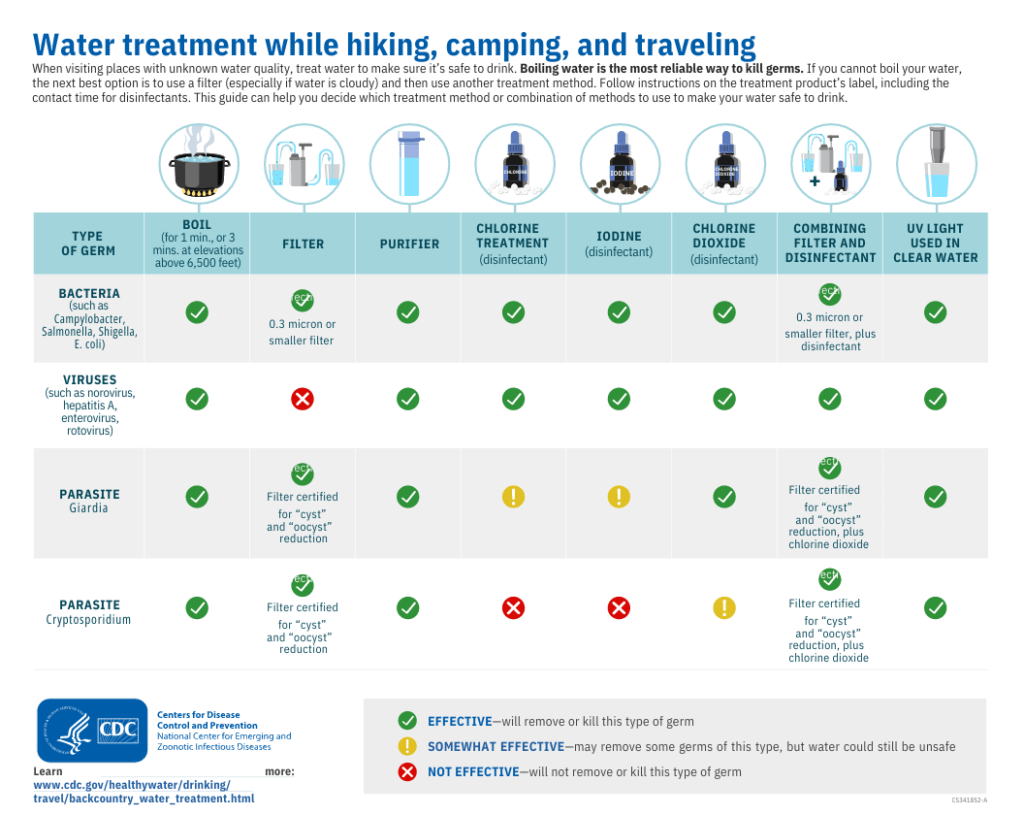
Embracing Resilience: Navigating the Waters of Preparedness
Wrapping up our journey through the realm of water storage, we’ve learned that it’s more than just a practical step – it’s a lifeline. From the humblest raindrop to the mightiest river, water is our ally, our protector in times of chaos. As we conclude, let’s recap the essentials that will keep you and your loved ones safe and hydrated, no matter what nature throws your way.
Liquid Gold in a Crisis
In the grand tapestry of emergency preparedness, water storage stands as a vital thread. It’s not just about having a container full of liquid; it’s about having a lifeline when chaos reigns. Clean and safe water isn’t a luxury; it’s a necessity that can tip the balance between survival and struggle.
Custom-Made for Your Clan
Remember, your water storage plan is as unique as your fingerprint. Factor in the climate, the number of hearts under your roof, and the specific needs that make your family a tribe. Whether it’s hurricanes or power outages, knowledge is your compass, guiding you to safety.
Containers: Your Guardians of Hydration
Choosing containers isn’t just about storage; it’s about safeguarding your water. Opt for food-grade materials, secure lids, and sizes that suit your family’s needs. And when dealing with heavyweights like large drums, make sure to choose their resting place wisely before you fill them up.
From Clear to Clean: Water’s Journey
Water’s journey doesn’t end when it’s stored – it’s an ongoing tale of preparation. Regular rotation keeps bacteria at bay, darkness thwarts algae, and vigilance ensures your supply remains pristine. Sunlight might be nature’s artist, but it’s best to keep it out of your water masterpiece.
Nature’s Backup Plan: Alternative Sources
Nature provides, but you must tread carefully. Rivers, streams, and rainwater hold potential, but they also harbor unseen threats. Filtering, boiling, and caution become your allies when sipping from these untamed sources.
Stay Ready, Stay Resilient
In the end, preparedness isn’t just about survival; it’s about resilience. It’s about facing the unpredictable with a spirit of strength and a mind armed with knowledge. So, fellow adventurers of readiness, let’s raise our containers – whether barrels, bottles, or water pouches – and toast to being prepared for whatever life’s currents may bring. May your water storage always flow clear and safe. Stay safe and stay prepared!


